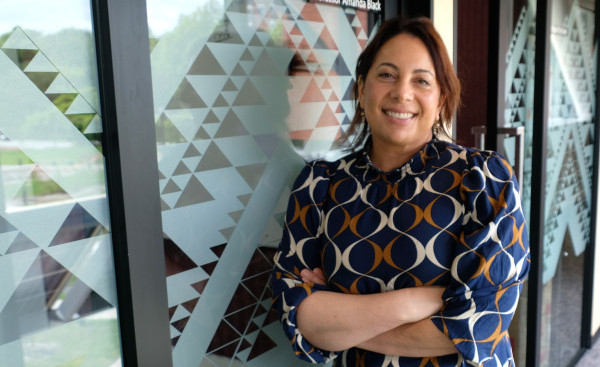Jetty study offers jumping-off point for future restoration projects
06 April 2022 | News
A Lincoln University study on jetty restoration projects around Te Pataka o Rakaihautū/Banks Peninsula shows that community-led initiatives with council input can lead to highly successful outcomes.
Community groups will now be able to use the findings to appeal to local government for future jetty restoration funding.
The research, by undergraduate students Jess Farrar and Kate Oranje with supervision from Associate Professor Hamish Rennie and Dr Sylvia Nissen, was based on a summer research scholarship called Jetties and small settlement regeneration in Banks Peninsula.
Funding came through AgResearch as part of the Building Better Homes, Towns and Cities National Science Challenge.
Few studies have explored the role of jetties in small settlement rejuvenation, and Dr Rennie said it was important to identify the benefits offered by the marine structures and investigate how residents had taken action to restore them.
The research focused on three jetties – Kaioruru/Church Bay, Takamatua and Ōtoromiro/Governors Bay – all of which were deemed unsafe following the 2011 Canterbury earthquakes.
Residents negotiated with the council to collaborate on restoration efforts, receiving funding for materials and doing the repair work themselves.
Newly opened in December 2016, the Kaioruru/Church Bay structure brought the community together for a celebration marked by a sign that read: "We saved our jetty".
The success story was used as a blueprint for other restoration projects around the Peninsula, with the Takamatua jetty now restored and Ōtoromiro/Governors Bay due for completion in 2023.
The researchers conducted in-depth interviews with people who were directly involved in the restorations or were long-standing community members.
Dr Rennie said the results indicated that community-led initiatives working alongside council could lead to success.
"Particularly in Church Bay and Takamatua, after working through some hurdles and developing a tangible plan, a successful outcome was reached in both cases."
Community members spoke highly of the relationship with the council, using expressions such as "amazing" and "couldn’t have been better".
Strong connections were also made in the communities and volunteer numbers were sometimes so high, people needed to be turned away.
The research showed that jetties were deeply valued in a variety of ways, with participants saying they provided access to the marine environment and offered an experience of the bays that would otherwise require a boat.
One resident stated: "It really is like walking on water. You stand at one end and there’s water all around you. It’s just an amazing experience. It’s another connection with nature of a different kind."
Dr Rennie said the summer scholarship offered an opportunity for the students to experience life as researchers before entering postgraduate study. Jess began a Master of Planning this semester and Kate plans to embark on a graduate programme when she completes her Bachelor of Environment and Society in June.
"This project has set them up really well for their postgraduate study and provided the pleasure of discovery through their own research, as well as tangible, lasting research outcomes."
Jess enjoyed interviewing participants "who were so passionate about their communities and saving their jetties".
"It was really encouraging seeing what a group of people can achieve when they have the right mix of skills, experience, motivation and support," she said.
Kate found it a real pleasure to meet with the interviewees and hear their perspectives on the jetty rebuilds.
"I loved seeing so many of them light up when talking about what makes their jetty so important to them and their communities – it was infectious! It was also great to see and experience the jetties myself, as it really helped with my understanding of why so many people are invested in these rebuilds."
Dr Rennie’s personal connection to the project came from the fact that he used to holiday as a child at the family bach in Kaioruru/Church Bay and the jetty played a key role in connecting him with the environment.
"In our family, being able to swim from the jetty to the beach was a rite of passage. Until you could do that, you were not allowed to go down to the beach by yourself," he said.
"I was living in Church Bay when the 2011 Canterbury earthquakes occurred and saw how councils willing to invest millions in central city facilities seemed reluctant to restore facilities for small settlements.
"Then the community galvanised around restoring the jetty. That’s what led to thinking about the role of jetties in these communities."
The study was carried out through Lincoln University’s Centre for Land, Environment and People (LEAP), an interdisciplinary hub that shares high-quality research relating to the wellbeing of the environment, society and its diverse cultures.
Dr Mike Mackay, who is based at AgResearch and co-leads the challenge’s Thriving Regions Programme, praised the project for making "an important contribution to our understanding of community-led regeneration projects – what works well, why and for whom – and how they can be resourced in the long term".
PHOTO: Student researchers, Jess Farrar and Kate Oranje, enjoy the jetty experience during a visit to Te Pataka o Rakaihautū/Banks Peninsula.


